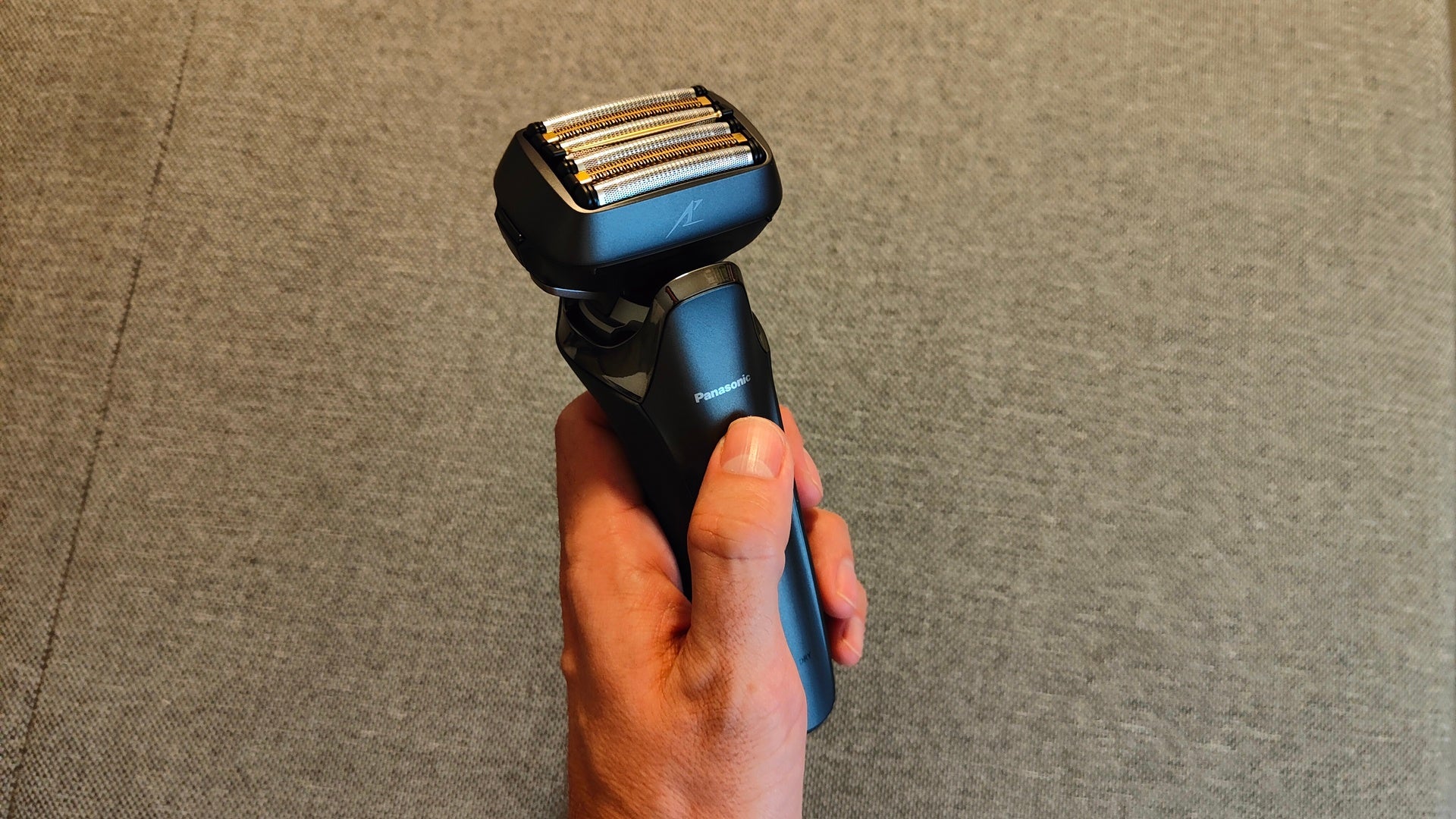Verdict
The Silk’n ToothWave is expensive and a wildcard, but its unique DentalRF technology really does work, loosening plaque and tartar during brushing so that it’s washed away. In turn, this not only brings down inflammation and other associated symptoms like bleeding, but teeth become whiter too. For this price, I’d want to see pressure sensitivity included. But if plaque busting is a top priority, then this is a toothbrush that will perfectly complement your next hygienist visit.
Pros
- Unique DentalRF technology reduces plaque
- Two-minute timer
- USB Charging
- Includes two brush heads
Cons
- No pressure sensor
- Design could be more premium
- Expensive
-
Sonic brushingFirst toothbrush to feature patented DentalRF technology -
3 vibration speedsCapable of up to 48,000 vibrating brush strokes per minute
Introduction
A £299/$299 asking price for an electric toothbrush is a pretty big ask, particularly for a small toothbrush manufacturer outside of Oral-B and Philips. Yet, the Silk’n ToothWave is here doing that, offering some different technology to try and tempt you.
Silk’n is perhaps better known for its selection of grooming products ranging from laser hair removal devices to facial cleansing, foot care, and more – it promises to stand out from the competition with a DentalRF system.
I’ll dive into the science a bit later, but in short, it uses radiofrequency waves to help break down and reduce tartar and plaque, while promising to reduce inflammation and help whiten teeth in the process. It’s a bold claim, but it’s backed by legitimate clinical trials. But how does it fare in the real world? Here’s my verdict.
Design and features
- A little basic looking
- USB charging
- Uses RF to dislodge plaque
The Silk’n ToothWave won’t win design awards anytime soon. That’s not to say it’s ugly, mind. And, well, there’s only so much visual appeal that one can squeeze out of something as utilitarian as an electric toothbrush. But there’s no denying that it’s playing second fiddle to similarly priced competition like the Philips Sonicare 9900 Prestige.
The Silk’n ToothWave’s all-white waterproof plastic body and embedded metal strip are completely inoffensive, at least, and I rather like the bright dash of neon green in the two included brush heads (one large, one small). The square power button plonked in the middle is a bit uninspired, and it’s a little too easy to press during brushing, though you’ll soon get the knack for avoiding it.
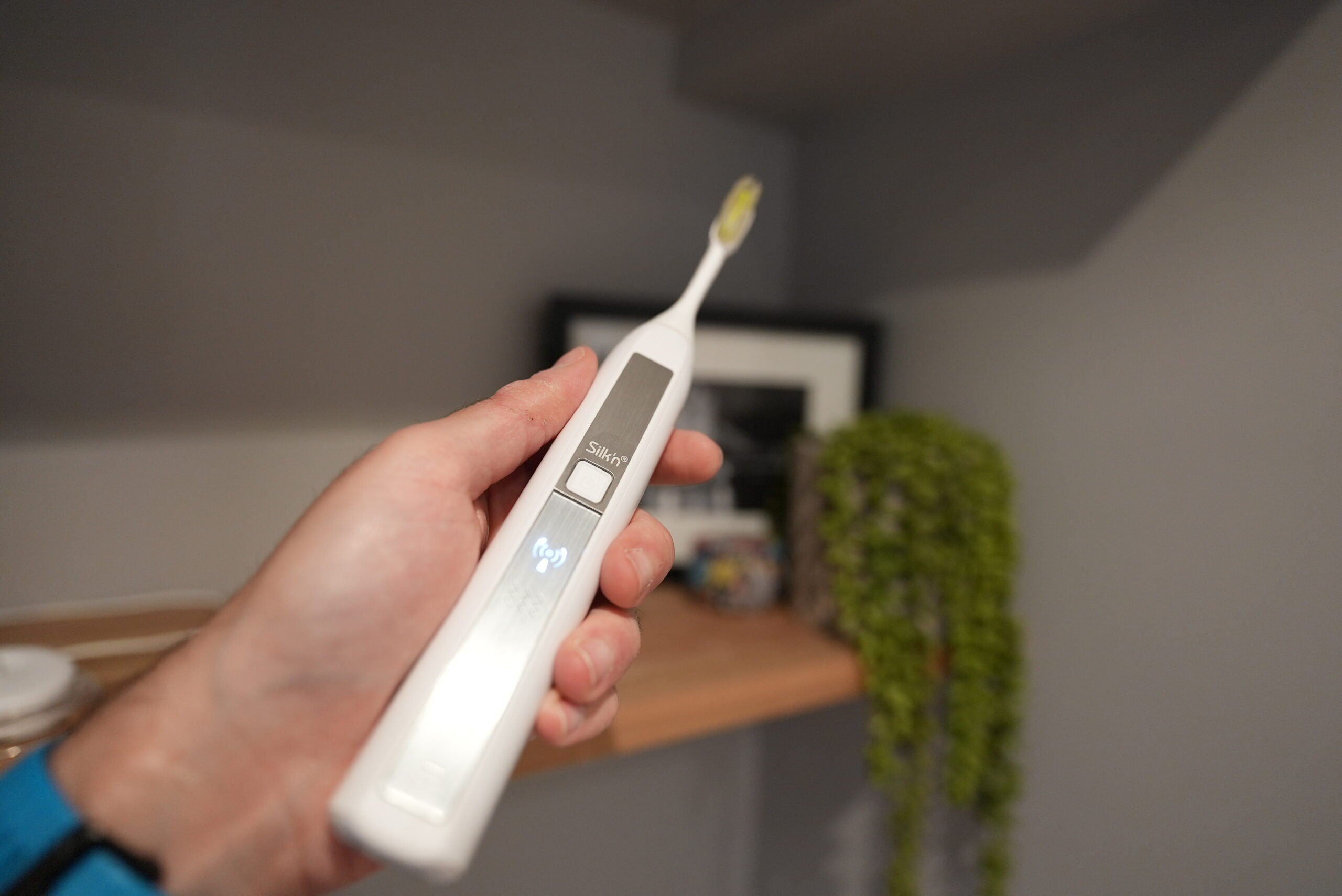
Beneath that, you’ll find LED cutouts of a radio antenna and a power level indicator, along with a battery capacity indicator at the bottom. The included charging dock is also a plain, no-frills plastic affair, with – thankfully – USB charging for convenience.
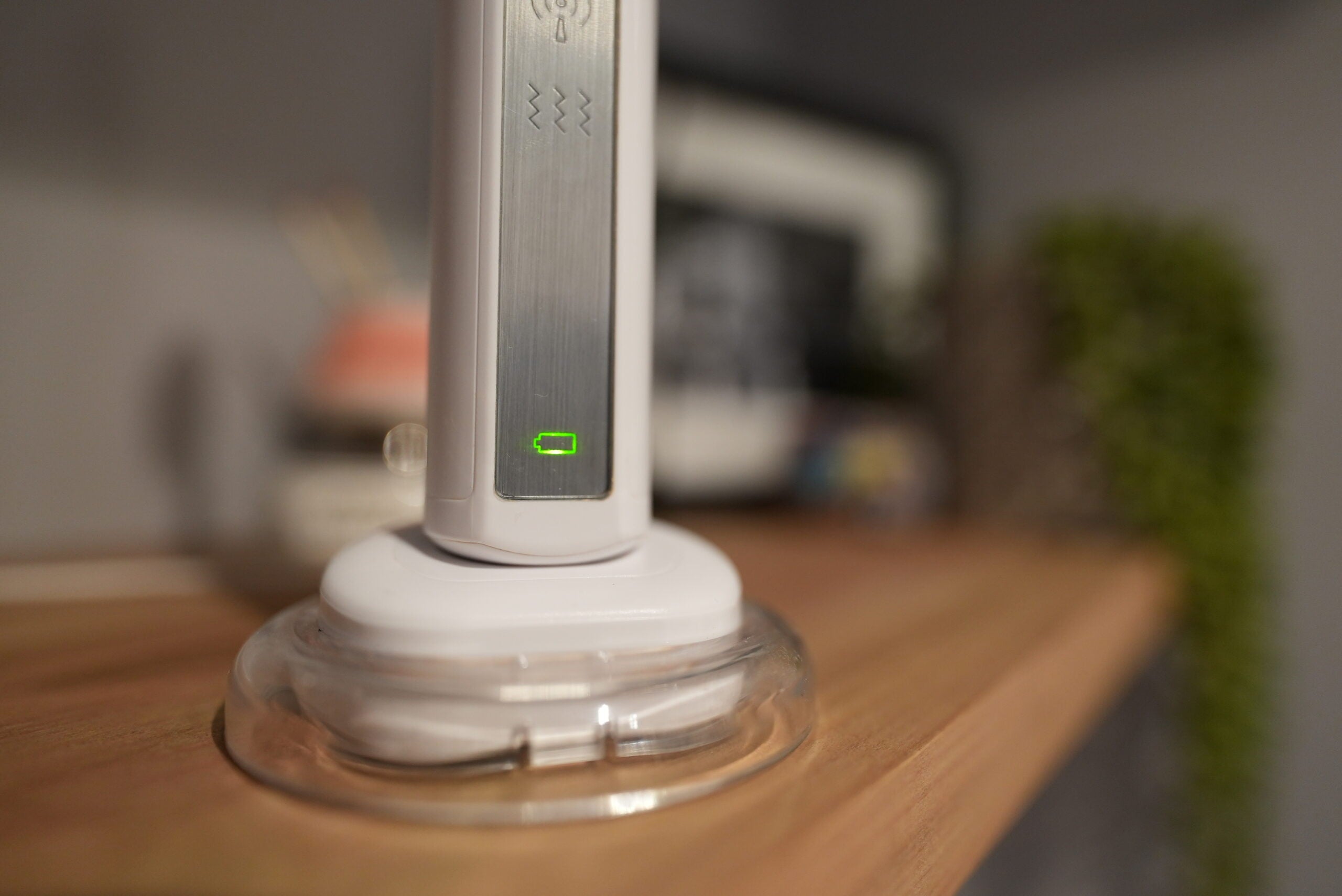
Operation is simple. The power button fires it up, and single presses during brushing cycles through low, medium, and high intensities. And, well, that’s it.
There’s no fancy app, Bluetooth connectivity, or AI-powered brush tracking here. Hell, there isn’t even a pressure sensor, which is, in my opinion, a key feature that everyone should prioritise. So why the expensive asking price?
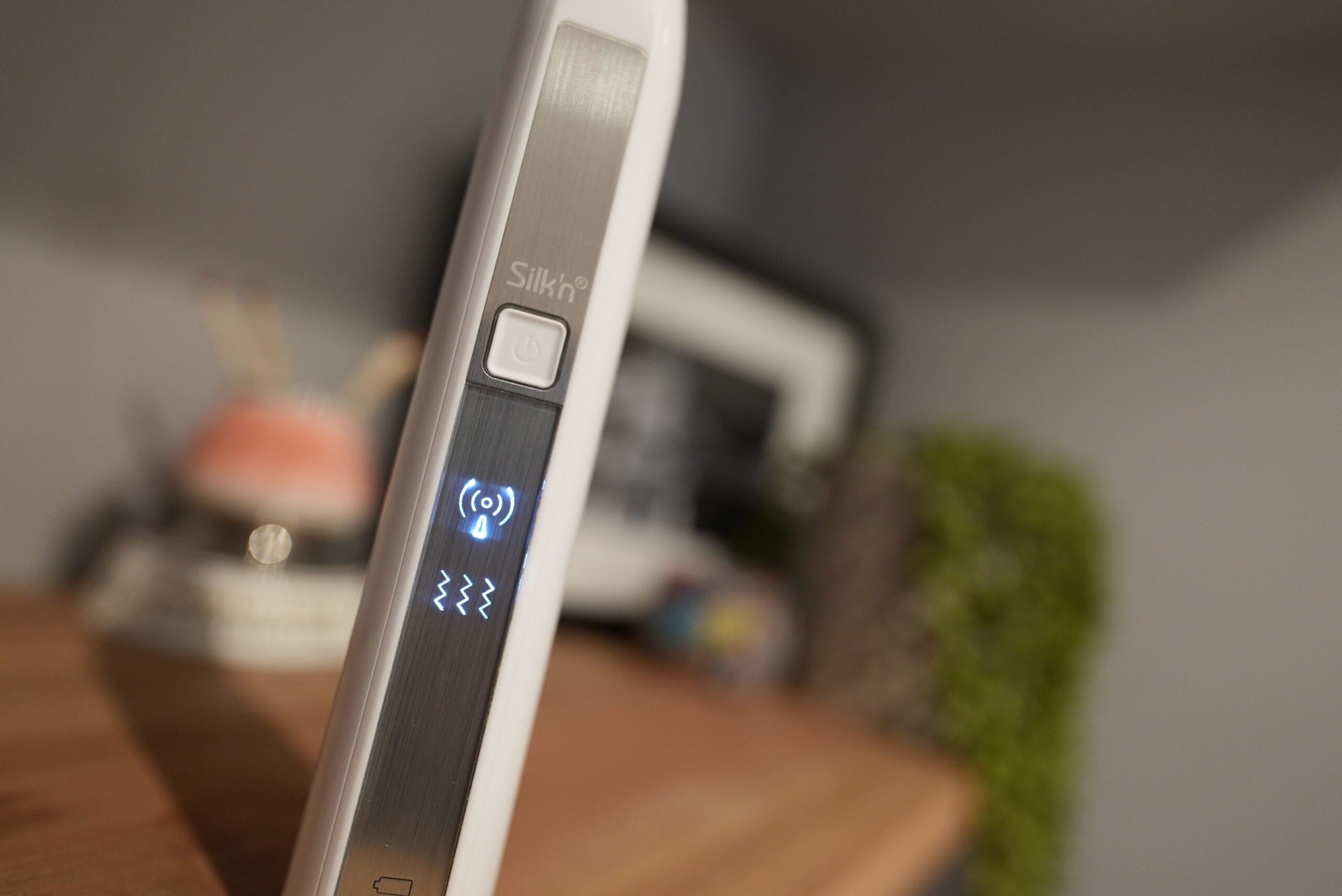
It’s all down to the fancy DentalRF technology. The video below explains it rather succinctly, but essentially, the specially-designed brush head sends mild radio frequency (RF) waves consisting of charged molecules to the surface of each tooth.
These molecules then destabilise the strong bonds that attach impurities like tartar, stain, and plaque to the surface of your teeth, letting all that nasty stuff detach and wash away during the brushing process.
As a result of this RF wizardry, teeth should become whiter, while gum inflammation (and consequent bleeding) should be reduced, thanks to the reduction in pesky tartar and plaque.
It’s very clever in theory, and the various trials and before/after shots certainly back it up. But how did I get on with it?
Performance
- Takes a while to acclimatise
- Two included brush heads
- Excellent results
At first, using the Silk’n ToothWave was a rather uncomfortable experience, but not in a painful way. Despite being used to all manner of electric toothbrushes, even the lowest sonic setting caused instant ticklishness/itchiness that made brushing correctly quite a challenge. I’m not sure if this is due to the soft bristles and/or the intensity of the vibrations, but it only took a few brushes before I became acclimatised to it.
Out of the two included brush heads, I’ve found that the smaller one offers a more comfortable experience, although they’re both still too large for my taste. I suppose that’s to house the DentalRF tech within, but it does make certain areas a little bit trickier to navigate. But nothing deal-breaking.
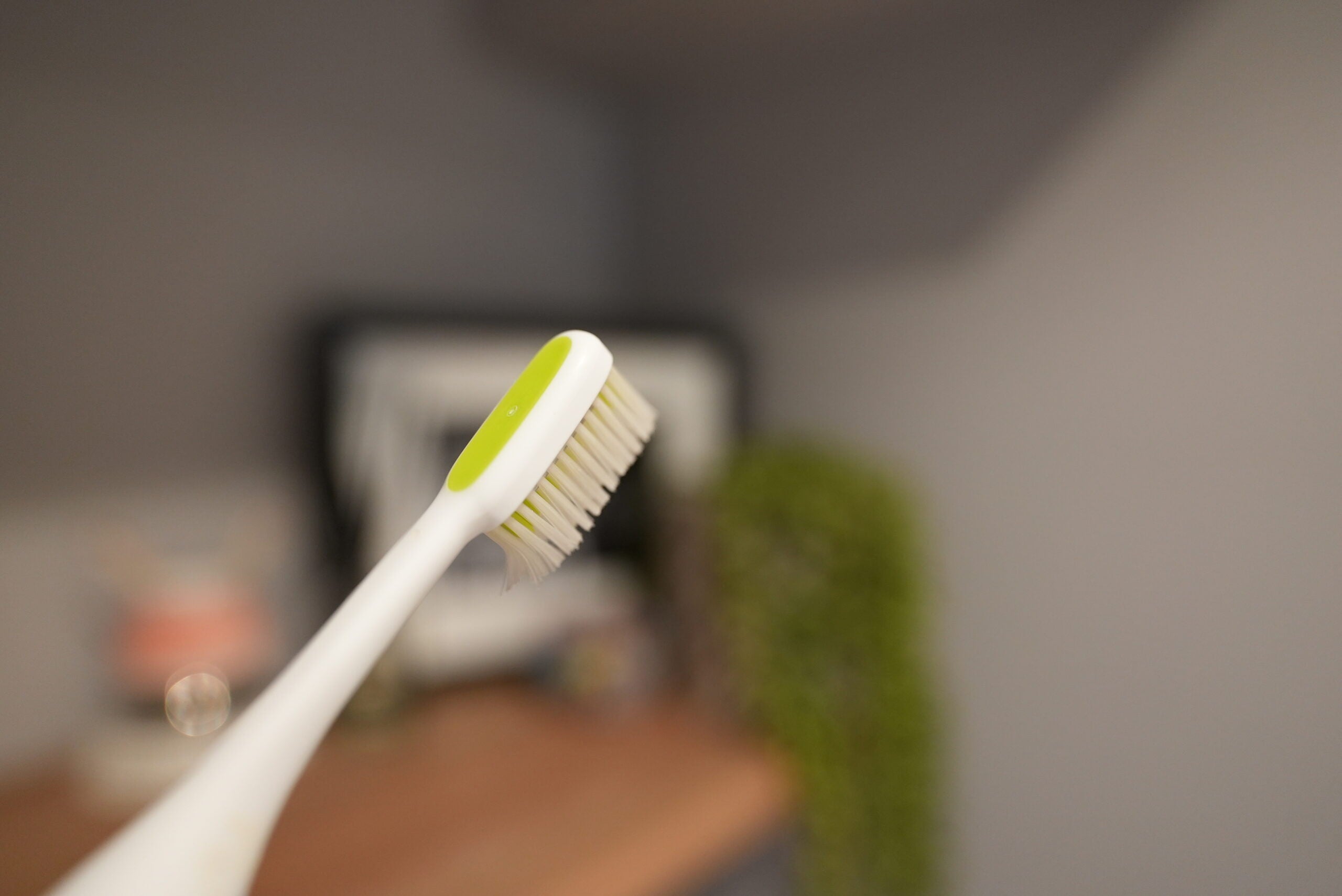
Before I get on to the results of the RF tech, it’s worth noting that as a standard sonic toothbrush, the Silk’n ToothWave performs well, and left my spinach and beetroot-laden dummy teeth suitably clean.
Not, perhaps, as physically clean as other Sonicare or Oral-B rivals I’ve tested (maybe due to its more gentle nature), but clean enough considering that no one would immediately brush their teeth after munching on spinach leaves and beetroot. Probably.
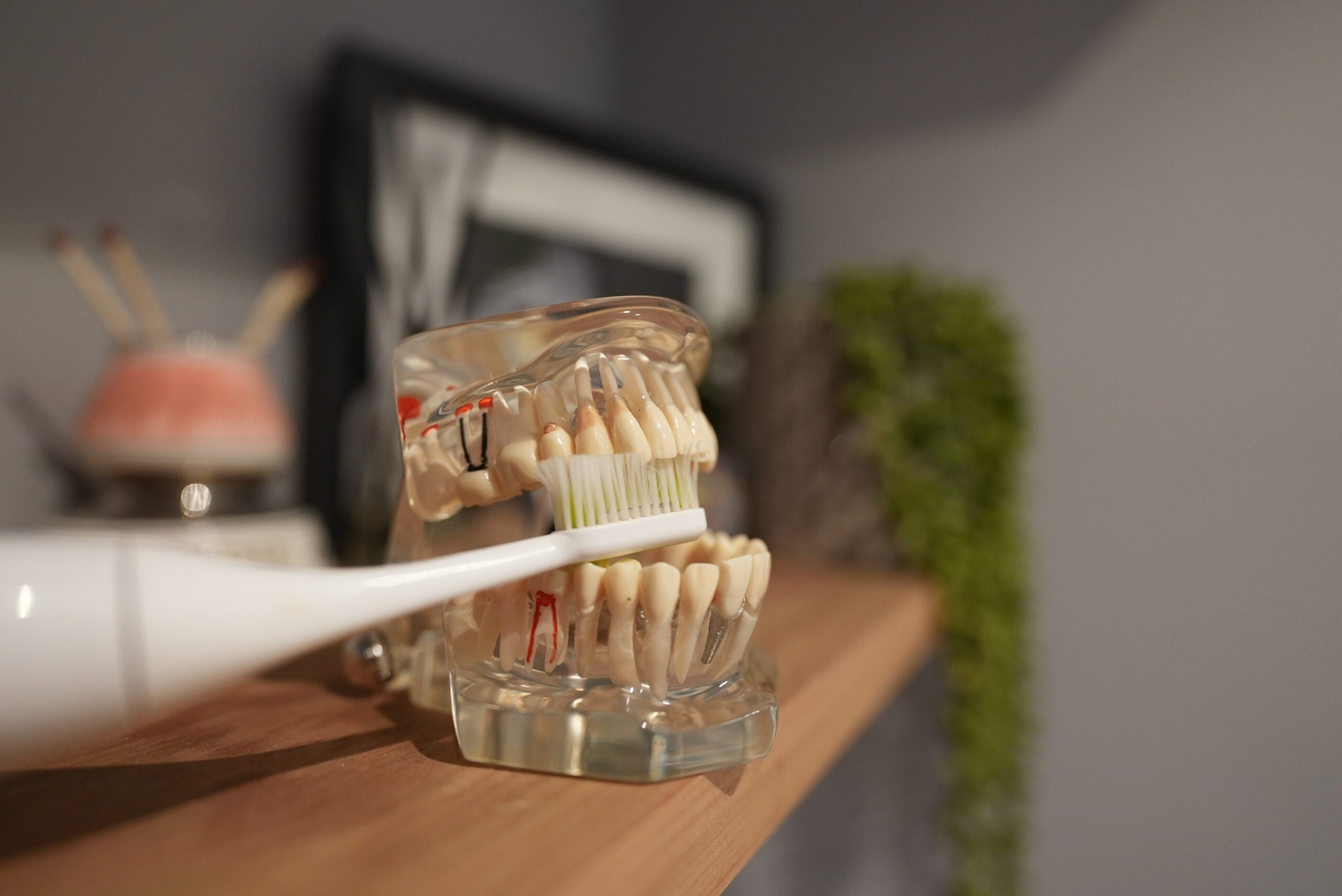
In real-world use, my teeth felt incredibly clean after each brushing session. And as for the always-on RF tech? I’m pleased to say that it’s legit. At least, in my experience. After using the Silk’n ToothWave for around six weeks, I can confirm that my teeth not only feel cleaner (as they would with any dedicated brushing regimen), but plaque build-up has also noticeably been reduced, as has inflammation and bleeding. They’re a tad whiter too.
For context, while I diligently brush my teeth, I don’t floss regularly. This, combined with a well overdue dentist/hygienist visit, means that there were sufficient real-world levels of plaque to tackle. And reduce.
No one is saying that this toothbrush will save you from having to go to the dentist or hygienist. It’s not a magic wand, and a hygienist visit is still on the cards, as nothing can beat the physical scraping and delicate removal of plaque. But the fact that levels are reduced, with negative symptoms following, is a pretty impressive result nonetheless and should help delay/prevent any necessary visits in future. If you stick to the correct brushing and flossing routine, of course.
As for battery life, the two-week estimate is bang on, provided you brush twice a day. You get plenty of warning when a low battery is approaching, with extra vibrations at the end of your brush session to warn you about reaching for the charger.
Latest deals
Should you buy it?
You want to reduce plaque
This impressive toothbrush uses RF to reduce plaque and it can make your teeth whiter.
You want a pressure sensor and premium feel:
Rival brushes look nicer and feel better made, plus many have an important pressure sensor.
Final Thoughts
Dropping this much cash on a non-Oral-B or Philips-branded toothbrush will take some guts – especially as it doesn’t look or feel like a premium product. And while it’s got the all-important two-minute timer, it’s lacking the equally important pressure sensor.
Despite these shortcomings, I definitely recommend considering the Silk’n ToothWave if you specifically want to reduce/keep on top of your plaque levels (and, in turn, the negative effects that come with them).
It’s backed by trials, and my personal experience confirms that it works. That’s not to say that you can’t get impressive results with other options, mind, available in our guide to the best electric toothbrushes.
How we test
We test every electric toothbrush we review thoroughly over an extended period of time. We use standard tests to compare features properly. We’ll always tell you what we find. We never, ever, accept money to review a product.
Find out more about how we test in our ethics policy.
Used as our main electric toothbrush for the review period.
Tested to see how well each brush cleans.
Tested to see what real-world battery life is.
FAQs
RF waves, consisting of charged molecules, destabilise the bonds that connect impurity molecules to your teeth. This helps remove plaque, calculus and stains, while making teeth whiter and reducing gum inflammation.
Verdict
The Silk’n ToothWave is expensive and a wildcard, but its unique DentalRF technology really does work, loosening plaque and tartar during brushing so that it’s washed away. In turn, this not only brings down inflammation and other associated symptoms like bleeding, but teeth become whiter too. For this price, I’d want to see pressure sensitivity included. But if plaque busting is a top priority, then this is a toothbrush that will perfectly complement your next hygienist visit.
Pros
- Unique DentalRF technology reduces plaque
- Two-minute timer
- USB Charging
- Includes two brush heads
Cons
- No pressure sensor
- Design could be more premium
- Expensive
-
Sonic brushingFirst toothbrush to feature patented DentalRF technology -
3 vibration speedsCapable of up to 48,000 vibrating brush strokes per minute
Introduction
A £299/$299 asking price for an electric toothbrush is a pretty big ask, particularly for a small toothbrush manufacturer outside of Oral-B and Philips. Yet, the Silk’n ToothWave is here doing that, offering some different technology to try and tempt you.
Silk’n is perhaps better known for its selection of grooming products ranging from laser hair removal devices to facial cleansing, foot care, and more – it promises to stand out from the competition with a DentalRF system.
I’ll dive into the science a bit later, but in short, it uses radiofrequency waves to help break down and reduce tartar and plaque, while promising to reduce inflammation and help whiten teeth in the process. It’s a bold claim, but it’s backed by legitimate clinical trials. But how does it fare in the real world? Here’s my verdict.
Design and features
- A little basic looking
- USB charging
- Uses RF to dislodge plaque
The Silk’n ToothWave won’t win design awards anytime soon. That’s not to say it’s ugly, mind. And, well, there’s only so much visual appeal that one can squeeze out of something as utilitarian as an electric toothbrush. But there’s no denying that it’s playing second fiddle to similarly priced competition like the Philips Sonicare 9900 Prestige.
The Silk’n ToothWave’s all-white waterproof plastic body and embedded metal strip are completely inoffensive, at least, and I rather like the bright dash of neon green in the two included brush heads (one large, one small). The square power button plonked in the middle is a bit uninspired, and it’s a little too easy to press during brushing, though you’ll soon get the knack for avoiding it.

Beneath that, you’ll find LED cutouts of a radio antenna and a power level indicator, along with a battery capacity indicator at the bottom. The included charging dock is also a plain, no-frills plastic affair, with – thankfully – USB charging for convenience.

Operation is simple. The power button fires it up, and single presses during brushing cycles through low, medium, and high intensities. And, well, that’s it.
There’s no fancy app, Bluetooth connectivity, or AI-powered brush tracking here. Hell, there isn’t even a pressure sensor, which is, in my opinion, a key feature that everyone should prioritise. So why the expensive asking price?

It’s all down to the fancy DentalRF technology. The video below explains it rather succinctly, but essentially, the specially-designed brush head sends mild radio frequency (RF) waves consisting of charged molecules to the surface of each tooth.
These molecules then destabilise the strong bonds that attach impurities like tartar, stain, and plaque to the surface of your teeth, letting all that nasty stuff detach and wash away during the brushing process.
As a result of this RF wizardry, teeth should become whiter, while gum inflammation (and consequent bleeding) should be reduced, thanks to the reduction in pesky tartar and plaque.
It’s very clever in theory, and the various trials and before/after shots certainly back it up. But how did I get on with it?
Performance
- Takes a while to acclimatise
- Two included brush heads
- Excellent results
At first, using the Silk’n ToothWave was a rather uncomfortable experience, but not in a painful way. Despite being used to all manner of electric toothbrushes, even the lowest sonic setting caused instant ticklishness/itchiness that made brushing correctly quite a challenge. I’m not sure if this is due to the soft bristles and/or the intensity of the vibrations, but it only took a few brushes before I became acclimatised to it.
Out of the two included brush heads, I’ve found that the smaller one offers a more comfortable experience, although they’re both still too large for my taste. I suppose that’s to house the DentalRF tech within, but it does make certain areas a little bit trickier to navigate. But nothing deal-breaking.

Before I get on to the results of the RF tech, it’s worth noting that as a standard sonic toothbrush, the Silk’n ToothWave performs well, and left my spinach and beetroot-laden dummy teeth suitably clean.
Not, perhaps, as physically clean as other Sonicare or Oral-B rivals I’ve tested (maybe due to its more gentle nature), but clean enough considering that no one would immediately brush their teeth after munching on spinach leaves and beetroot. Probably.

In real-world use, my teeth felt incredibly clean after each brushing session. And as for the always-on RF tech? I’m pleased to say that it’s legit. At least, in my experience. After using the Silk’n ToothWave for around six weeks, I can confirm that my teeth not only feel cleaner (as they would with any dedicated brushing regimen), but plaque build-up has also noticeably been reduced, as has inflammation and bleeding. They’re a tad whiter too.
For context, while I diligently brush my teeth, I don’t floss regularly. This, combined with a well overdue dentist/hygienist visit, means that there were sufficient real-world levels of plaque to tackle. And reduce.
No one is saying that this toothbrush will save you from having to go to the dentist or hygienist. It’s not a magic wand, and a hygienist visit is still on the cards, as nothing can beat the physical scraping and delicate removal of plaque. But the fact that levels are reduced, with negative symptoms following, is a pretty impressive result nonetheless and should help delay/prevent any necessary visits in future. If you stick to the correct brushing and flossing routine, of course.
As for battery life, the two-week estimate is bang on, provided you brush twice a day. You get plenty of warning when a low battery is approaching, with extra vibrations at the end of your brush session to warn you about reaching for the charger.
Latest deals
Should you buy it?
You want to reduce plaque
This impressive toothbrush uses RF to reduce plaque and it can make your teeth whiter.
You want a pressure sensor and premium feel:
Rival brushes look nicer and feel better made, plus many have an important pressure sensor.
Final Thoughts
Dropping this much cash on a non-Oral-B or Philips-branded toothbrush will take some guts – especially as it doesn’t look or feel like a premium product. And while it’s got the all-important two-minute timer, it’s lacking the equally important pressure sensor.
Despite these shortcomings, I definitely recommend considering the Silk’n ToothWave if you specifically want to reduce/keep on top of your plaque levels (and, in turn, the negative effects that come with them).
It’s backed by trials, and my personal experience confirms that it works. That’s not to say that you can’t get impressive results with other options, mind, available in our guide to the best electric toothbrushes.
How we test
We test every electric toothbrush we review thoroughly over an extended period of time. We use standard tests to compare features properly. We’ll always tell you what we find. We never, ever, accept money to review a product.
Find out more about how we test in our ethics policy.
Used as our main electric toothbrush for the review period.
Tested to see how well each brush cleans.
Tested to see what real-world battery life is.
FAQs
RF waves, consisting of charged molecules, destabilise the bonds that connect impurity molecules to your teeth. This helps remove plaque, calculus and stains, while making teeth whiter and reducing gum inflammation.




















